We know pretty little about what Google has planned for the future of Android. The company may have to turn the dictionary upside down and look for other candy names to continue baptizing new versions of the system, or Fuchsia may end up replacing all Google platforms and become the only operating system that many have been waiting for for for years. We know that whatever these plans are, the Google Assistant will be the core in charge of bringing the company’s services together in the same ecosystem.
On the other hand, an ecosystem will be full of devices of various categories. After all, Google is doing everything possible to bring its virtual Assistant to all kinds of gadgets from mobile phones, tablets, and computers to speakers, headphones, televisions, and even a new concept such as bright screens like the Google Nest Hub, known until recently as Home Hub.
After the first launch in October of last year and a recent expansion in markets beyond the United States, Google’s intelligent Hub Nest display now arrives on our test table to try to explain the reasons why someone might need it in their life as a smart speaker attached to a 7-inch screen.
Google Nest Hub Fact Sheet
| Google Nest Hub | |
| specs | |
| Dimensions | 17.85 x 11.8 x 6.73 cm / 480 grams in weight |
| Screen | 7-inch HD LCD (1024 x 600 pixels) |
| Audio | Full-range speaker / 2-microphone long-range array |
| Connectivity | Wi-Fi 802.11b/g/n/ac (2,4 GHz/5 GHz) / Bluetooth 5.0 |
| Operating system | Based on the Google Cast platform |
| Processor | Amlogic S905D2 |
What you can and can’t do with Google Nest Hub
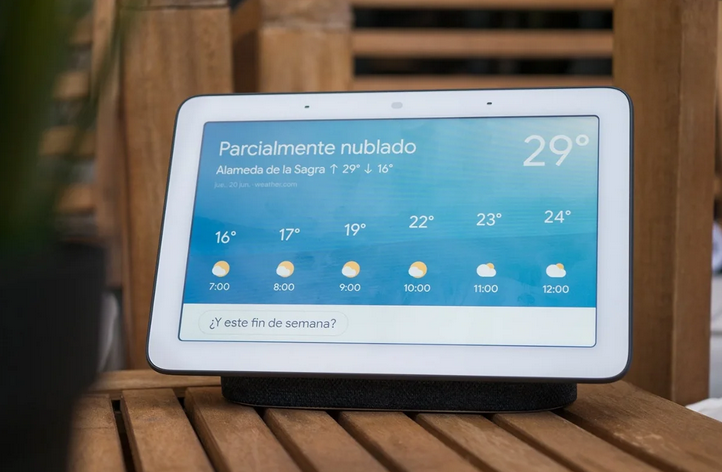
Those of you who are already familiar with the Andro4all review format will know that we usually separate this type of article into two parts: “The Best” and “The Worst.” However, since Google’s Nest Hub marks the arrival of a new type of device, it is necessary to spend a few lines to see what this intelligent screen can do for us before going on to see its advantages and disadvantages.
Roughly speaking, the Google Nest Hub is a Google Home Mini stuck to a 7-inch screen. Therefore, with this device, we can do everything that can be done with a Google Home or Home Mini, from making inquiries and obtaining information on specific topics to controlling the devices of our smart Home using only the voice.
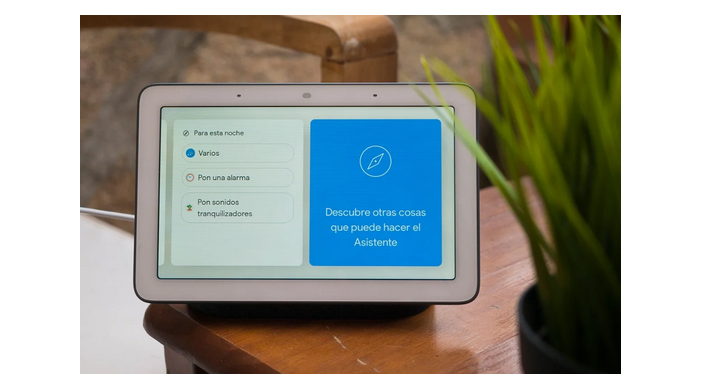
However, the screen brings a new approach to the concept of intelligent speakers. It is no longer only possible to obtain auditory information. Still, thanks to the panel, we can carry out actions such as seeing the weather forecast for the next few days by asking the Assistant what the weather is like visualizing the steps of a cooking recipe, controlling digital home devices, and much more precisely, more. In short, the screen serves to complement all the capabilities of the Google Assistant in intelligent speakers through visual data that may be relevant to the user and thus improve the experience.
The Nest Hub screen acts as a complement to all the capabilities of the Google Assistant on smart speakers.
However, since the operating system integrated into Google Nest Hub is based on the Google Cast, it is also possible to use the screen to send content or play multimedia as if it were a television associated with a Google Chromecast. Only more minor and with a lower resolution screen.
When setting up the ingenious display for the first time through the Google Home app, other features of this device are also detailed. One of them is the possibility of making voice calls through services like Google Duo. However, this also leads us to think about what cannot be done with the Nest Hub because for privacy reasons; Google has decided not to include a camera in this intelligent screen. Therefore, the possibility of making video calls that we would find in other similar devices such as the Amazon Echo Show is lost.
But perhaps the best thing about having a device that bases its utility solely and exclusively on the Google Assistant is that new functions never stop arriving since the software is constantly evolving. You can take advantage of the screen…
The best of Google Nest Hub
Screen

It is now time to talk about the best of this device built by Google, and it is precisely the aspect that makes it unique, the same that we must highlight in this analysis in the first place: its screen.
On paper, the 7-inch LCD panel with 1024 x 600-pixel resolution doesn’t seem like much of a boast. And it is not. The screen is not of much better quality than what a mid-range tablet of this size could integrate, and its main technical strength is the excellent viewing angles. However, everything that this small panel brings to the experience with the device makes us completely forget about the low resolution or the existence of pronounced margins around it.
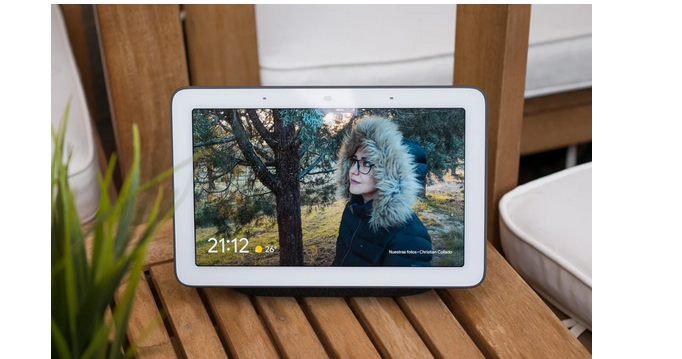
It’s a delight to glance at the Nest Hub screen at any time of day; the panel will never be more or less illuminated than necessary. This is taken care of by the “Ambient EQ” light sensor located at the top of the panel, in charge of adjusting the screen’s brightness level and the color temperature depending on the ambient light. Performance is fantastic, and the subtle changes in color temperature and brightness make something as simple as viewing a Google Photos image album a delightful experience.
And when the ambient light is low enough, the display will automatically enter “Ambient Mode” to display only a digital clock. And since the screen’s minimum brightness is surprisingly common, it won’t bother you when you go to sleep and have the device on the nightstand or anywhere else in sight.
Ease of use and operation
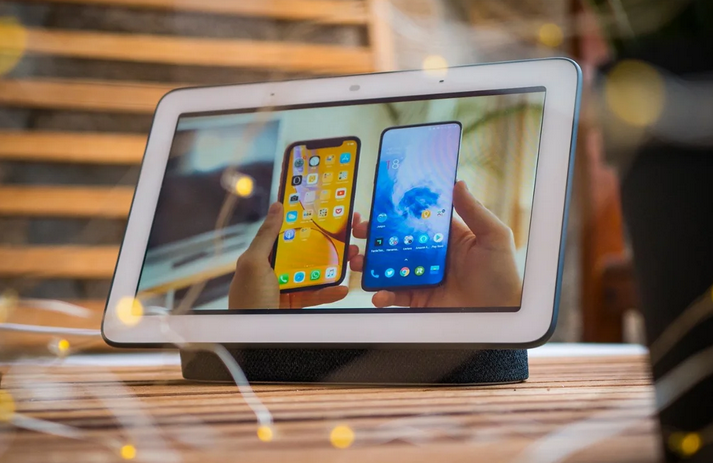
Getting familiar with the controls of the Google Nest Hub is very easy. Once the configuration process has been carried out through the Google Home app, the bright screen directs us directly to the “Photo Frame” mode, where we can choose if we want the Google Photos albums that we have selected to appear, works of art, images from our Flickr or Facebook profile, and finally a full-screen clock. In any of the first options, information about the weather and the time will also appear, while in the last chance, we will only see a large clock on the screen.
Touching the screen brings up a menu with some of the most relevant information cards. This panel is similar to the Google feed of the search engine app on our mobiles. It is possible to access the different “apps” by clicking on them or going to the final card to see other actions that Google Nest Hub can do for us.
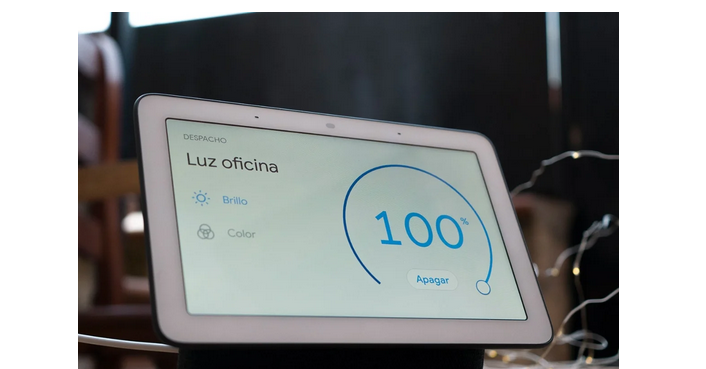
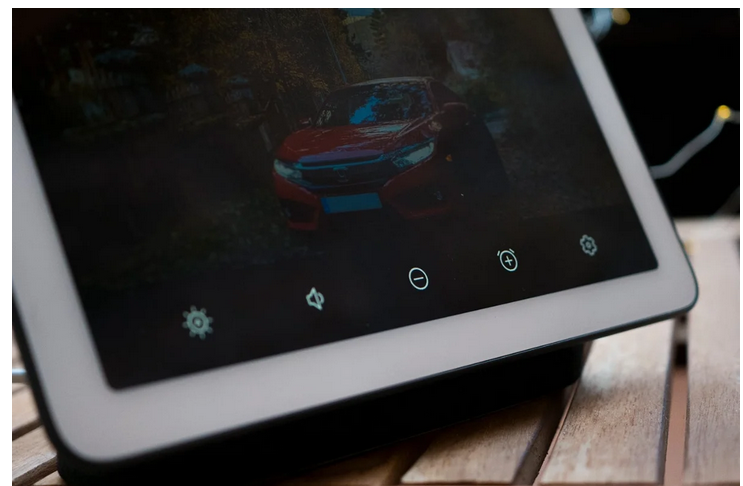
Suppose. Instead, we swipe down from the top of the screen. In that case, we enter a quick menu of options, which allows us to carry out quick actions such as turning lights and other devices on or off, viewing and configuring routines, playing multimedia content on different devices, or “making announcements” through the rest of the devices in the house. A button is also included from which you can see the configured rooms. One thing to note is that the home device can only be controlled from the Nest Hub, but the initial setup must be done using a smartphone running the Google Home app.
This small panel can modify the screen’s brightness or the speaker volume, activate the do not disturb mode, configure alarms, or access the system settings. Finally, swiping up from the screen’s bottom edge accesses device settings. Also, wherever we are, swiping right from the left side of the panel will take us back to the home screen.
And that’s it. In addition to the simplicity of this interface, the operation is very fluid, and at no time will it be necessary to endure loading times that are higher than usual.
Design and format
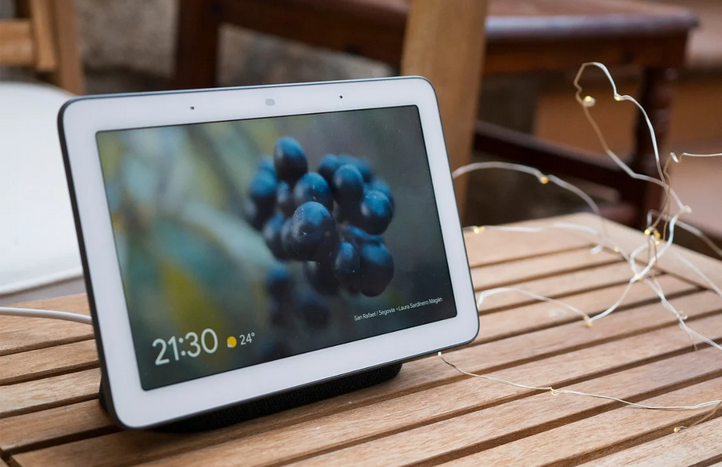
It is clear that the Nest Hub is the product of the work of the same design team that has developed the rest of the Google Home models, the Pixel phones or the Daydream View glasses, among other things, and it is enough to take a look at its appearance and construction to realize it.
Its body is made of plastic, and the speaker, like the rest of the models in the series, is completely covered in fabric. The same material that Google uses to shape the protective cases of its Pixels. On the back of the screen, we will be able to find the only physical “mechanisms” that the Nest Hub has: two-volume up and down buttons and a switch that allows you to disable the microphone temporarily. In the case of using the latter, an orange LED will light up at the top of the screen.
The Google Nest Hub is small. Very small. More than one will likely be surprised when they see the device for the first time since the photographs do not justify its actual size. After all, Google has even had to launch a Nest Hub Max with a three-inch larger screen.
However, and from my point of view, the small size of this device only brings advantages. Regardless of whether you want to place it on the bedside table, on the desk, or the kitchen counter, it will not take up too much space or be the most eye-catching element, thanks to its minimalist aesthetic.
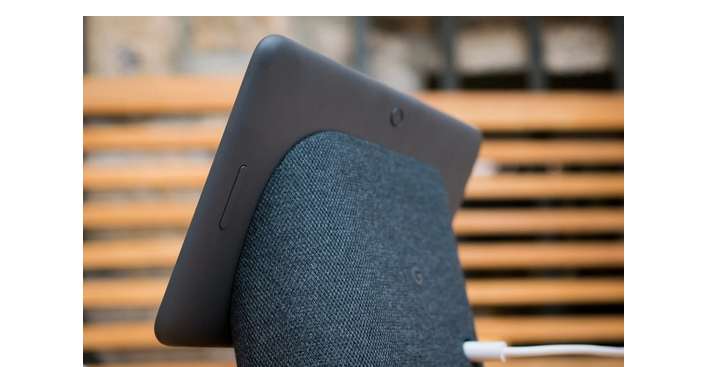
The least good thing about Google Nest Hub
audio quality
Max. Unlike other members of the Google Home family, such as the Home Mini or Home Max, the Nest Hub’s speaker is located on the back of the device so that, in most cases, it will not be directed towards our position. This, added to the fact that the quality of the audio emitted by the speaker is not exactly its strong point – much closer to that of the Google Home Mini than to the original Home -, maHomehe sound the only negative aspect of the Nest Hub to highlight.
Logically, this will not be a problem if you want the device to be used only to make calls through Duo, listen to podcasts or take advantage of the capabilities of the Google Assistant by obtaining audiovisual information. But I am afraid that it should not be your first choice to get the best experience when listening to music.
Google Nest Hub: opinion and final thoughts from Andro4all
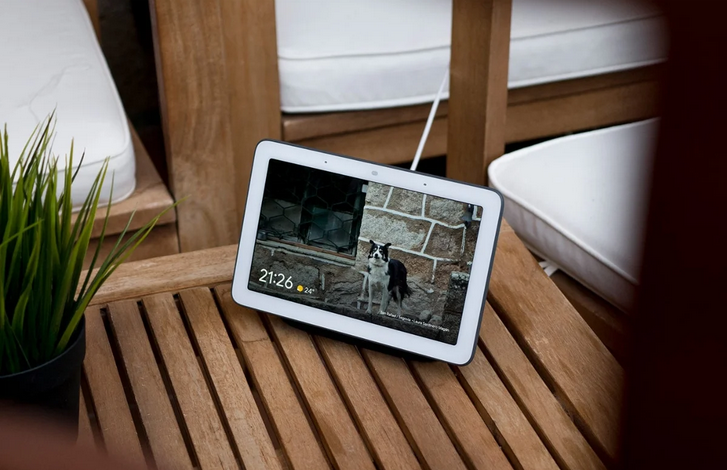
I’d value buying the Google Home Hub even if it was just a digital photo frame capable of displaying my Google Photos images, the weather at my location, and little else. Its small size makes it look good anywhere in the house, and the small screen equipped with Ambient EQ technology is easy on the eyes in any situation and time of day.
But the sheer utility of the Google Assistant and integration with the Google Home ecosystem make recommending it even more worthwhile, especially for those who already have Assistant-enabled intelligent home devices.
And even without compatible equipment, the added value offered by the screen makes it a more balanced, complete, and versatile device than the Google Home and Home Mini for those who want to enter the vast world of the connected Home for tHomeirst time. Although also a more expensive one.
Price and where to buy Google Nest Hub
As indicated at the beginning of the analysis, it was in October 2018 when Google first introduced the Nest Hub – back then called Google Home Hub -, along with the Google Pixel 3 and 3 XL. A few months later, during I/O 2019, the company decided to expand the availability of the device to more regions of the planet. Today, it can already be purchased in Spain, Germany, Australia, Canada, the United States –except Puerto Rico–, France and the United Kingdom, for 129 euros. You can choose between the colors Chalk and Charcoal.
| Google Nest Hub, opinion and note from Andro4all | |
| Should I buy the Google Nest Hub? | |
| In favor |
|
| Against |
|
| Conclusions | The Nest Home Hub screen perfectly complements the many capabilities of the Google Assistant in smart speakers, and if we add to that extra such as integration with Google Photos, the great panel capable of adapting to each environmental situation or the possibility of reproducing YouTube videos, make this device a permanent place on my desk for years to come. |
| Punctuation |
Google Nest Hub The classic digital photo frame takes on a new life. |

Sharlene Meriel is an avid gamer with a knack for technology. He has been writing about the latest technologies for the past 5 years. His contribution in technology journalism has been noteworthy. He is also a day trader with interest in the Forex market.













